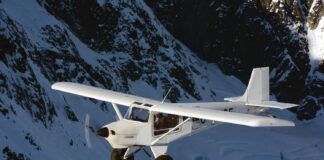You might think that a long-running proposal to streamline certification and greatly expand (and make far more usable) LSA and sport pilot rules would have the industry locking arm, raising voices in song and, therefore, on a clear path to success. You might, but you’d be wrong. See, while a very large proportion of general aviation has seen the value in the FAA MOSAIC program, it is not unanimous. And some cagey late-inning gamesmanship by a key “alphabet” seems intended to unravel some of that goodwill and momentum. I’ll come back to that.

MOSAIC is important, both for general aviation as a whole and for our little corner of the world. In short, MOSAIC represents a significant opening up of LSA rules and would make many more aircraft available to sport pilots. Its foundation includes a huge set of “consensus standards” set by an ASTM committee (in this case called F37) that includes representatives of the manufacturing class. In other words, the people who are going to use the rules to build new airplanes. Let me put a finer point on this. MOSAIC could be a transformational change in the way light aircraft are designed and certified. It has the potential to finally disconnect the one-size-fits-all mentality underpinning conventional FAA certification that has, in part, led to popular series-built aircraft becoming mind-bogglingly expensive. A well-equipped Cirrus SR22 is nearly a $1 million airplane. And rather than seeing MOSAIC as a threat to the Experimental market, I see it as additive. With the proposed increases in weight and capability, I could see several existing kit makers turn their most popular models into production-line aircraft, and that helps the whole.
Overall, the MOSAIC initiative seemed to have been going well. I was invited to listen in on the ASTM F37 committee meetings and what I found was a group of professionals with disparate backgrounds, all looking for different things (some are fixed wing, some eVTOL) yet working with commendable harmony. The depth of the project is staggering. In it, the committee is grappling with new ways to approve designs and testing, considering how to manage maintenance and record-keeping and finding ways to work along the “safety spectrum” with the new tools that new data and computer-aided design give us over the legacy processes. Consider that the vast majority of light aircraft today are flying under CAR 3 (not the FAA’s FAR Part 23) certification, where computers weren’t even a glimmer in the eye.
Ticking Clock
As I was watching this work from afar, time was counting down to the Jan. 22 deadline for comments on the NPRM. By mid-January, the FAA had nearly 1000 comments from users and industry. Near the deadline both EAA and Van’s Aircraft had made public their comments and urged others to follow a similar theme. Probably the key concern was increasing the maximum stall speed. MOSAIC’s proposal has it at 54 knots Vs1 (without flaps or any high-lift assistance, usually called “clean”).
EAA has proposed increasing that to 58 knots Vs1, which is helpful but doesn’t allow aircraft like the RV-14 or RV-10 into MOSAIC. Van’s, naturally, would like to see more. “Van’s Aircraft believes that changing the stall speed to 54 Vs0 with the use of conventional flap systems would be acceptable. A better solution would be 61 Vs0 (which was already deemed safe in the preamble for the Primary category decades ago). 61 Vs0 is in use by foreign countries where MOSAIC is already in place, and should be considered for harmonization between markets.” Recognizing this might be a bridge too far, EAA has proposed an expansion of the stall speed from their proposed 58 knots Vs1 when the aircraft is equipped with certain safety features, including things like AoA instrumentation and crashworthy seats, something Van’s ardently supports. Frankly, I have a hard time seeing how specifying stall speeds in landing configuration can’t be a thing; it has been for certified single-engine aircraft, at 61 knots. Cirrus aircraft have a good safety record now and stall at 60 KCAS dirty.
So Far, So Good
But roughly 10 days before the end of the comment period comes GAMA, the General Aviation Manufacturers Association, with this gem: “The GAMA team is currently working across our broader membership to develop collective comments and recommendations in response to the FAA’s MOSAIC proposed rule which are due on January 22nd. Overall, GAMA supports the direction of key aspects of the proposal to increase the size, performance and scope of aircraft that can be flown by sport pilots and be issued a special airworthiness certificate with the objective of improving safety, functionality, innovation, and availability of small general aviation aircraft. However, there are areas of the proposal which go beyond what was expected and require additional clarification and justification from the FAA. In addition, GAMA believes the FAA misses a significantly important opportunity to fully realize the intended objectives and benefits of this proposal by not applying a consistent approach across all small aircraft airworthiness and certification processes. Our submission will go into further detail on these issues.”
Scuttlebutt was that GAMA was objecting to the four-seat provision in MOSAIC. But in a follow-up, GAMA said that it “intends to support the MOSAIC proposal for sport pilots to be able to fly four-seat airplanes. As for aircraft, we intend to support the increase in the size, performance and scope, and our comments, which are still in coordination with our members, will lay out the details of how that can be achieved.” Again, a non-answer. So what is the issue? A few days later, I sat in on the F37 call where GAMA representatives expressed the concerns that had been relayed to them, presumably from their manufacturer members, that, in effect, four-seat aircraft should be certified in the Primary category.
Let me take a step back and remind everyone that the Primary category has been an abject failure, full stop. But, no, GAMA wants “complex” four-seat airplanes to fall into this category to keep them on the right side of the safety spectrum. The entire purpose of MOSAIC is to streamline certification and get the FAA out of the business. It’s worked extremely well with LSA and most of the likely new MOSAIC airplanes won’t be far from what we have today. (Need some numbers? Check out Ron Wanttaja’s LSA safety story.) And what is considered complex? I can tell you that a pilot is much busier in a Cessna 172RG (manual prop, mixture, cowl flaps, gear) than a Sling 4, which has a semi-automated constant-speed prop and computerized everything else including the turbo. You could call the Sling complex but it’s really easy to fly. We need to focus on the experience, not the hardware.
This is what kills us. MOSAIC is a well-considered effort to usher in less expensive and more technologically advanced aircraft that would fill vital training and recreation roles. Homebuilts are, as we all know, a small segment of general aviation (albeit one that continues to contribute some 1000 airframes each year) so the health of the whole is important to us. Instead, we have entrenched interests grabbing the yoke. Here’s to hoping those in the FAA see GAMA’s incentive to move four-seat MOSAIC airplanes into the Primary category for what it is: preserving the status quo. Because what we need are more million-dollar airplanes.














“Here’s to hoping those in the FAA see GAMA’s incentive to move four-seat MOSAIC airplanes into the Primary category for what it is: preserving the status quo”…
Hopes and Dreams don’t preserve GA. Fighting for it does…We should band together and quit hoping and tell GAMA to STUFF IT!
Anyone else out there whose with me?
Mark, thank you for keeping this out front and center. GAMA’s behavior is an eye opener, and in my opinion a cowardly 11th hour attack on GA overall. Let’s keep the pressure on the FAA to make the right choices by using data that supports the changes we’re all after. But after all, when GAMA hires communication directors with a history of only working in politics and for bureaucrats, we shouldn’t expect any different.
Hi Marc, you (or Van’s) are writing of foreign countries where MOSAIC rules are already in place – can you tell us which countries those are? I’m not aware of any countries allowing 61kt vs0 in anything other than primary category or experimental/amateur-built.
Let’s hope MOSAIC continues on with the support of the community without stalling out in “status-quo” worries. This industry needs more production of aircraft accessible to the average person!
The reason why GAMA is pro Primary category for four seat aircraft is because Primary category aircraft still need to meet Part 23 certification standards. The only difference with Primary category was how you were supposed to go about proving you met Part 23 standards. By proving that you met those standards, even if they weren’t proven in the conventional way, it would be easier to get the airplane certified outside the US since most other countries have standards similar to Part 23. The problem with Primary category is that the alternative way of proving you met the standards was so watered down and cumbersome that it wasn’t worth the effort over the normal method. GAMA saying that they want four seat aircraft certified under Primary category is them saying that they don’t want four seat aircraft certified under ASTM standards, plain and simple.
Let both certifications operate. Label clearly. Make information available to buyers and passengers. And let the customers decide.
Marc,
Thanks for pulling the covers off of the GAMA’s true agenda, to hold onto their ability to corner the cash. Competition is the key to innovation and affordability, and the lack of it results in the stagnant designs, performance, and safety features that the GAMA members have provided for many decades. MOSAIC is the way this competition can exist in a safe, but productive environment, and needs to move forward to save general aviation from being only an unaffordable dream for all but a few.